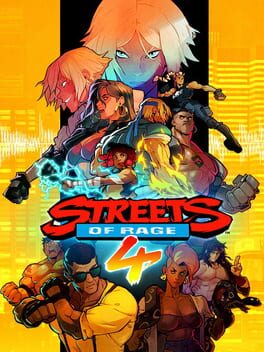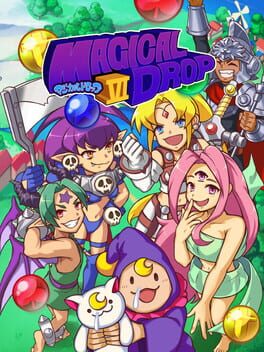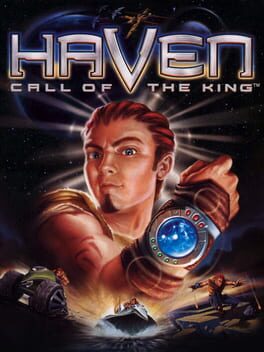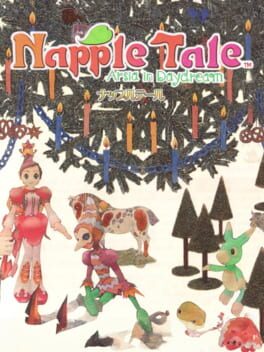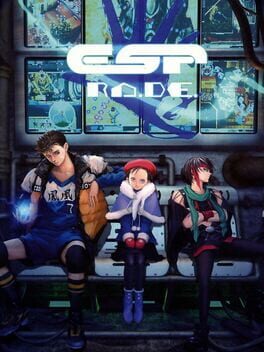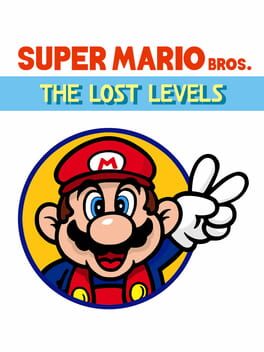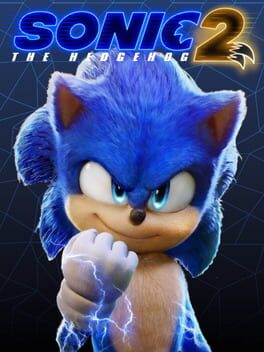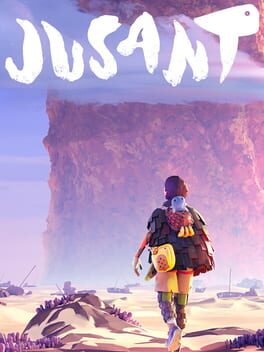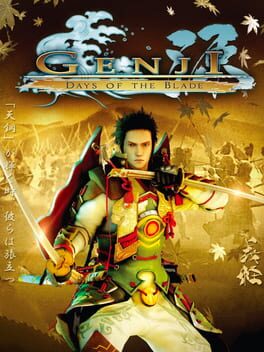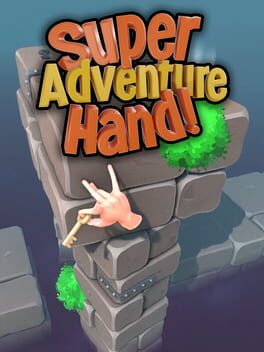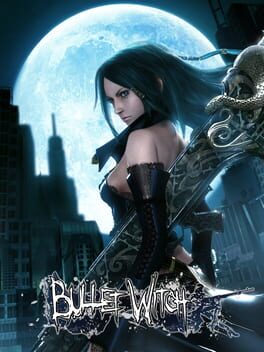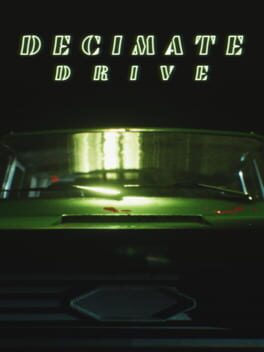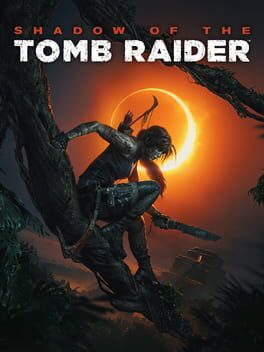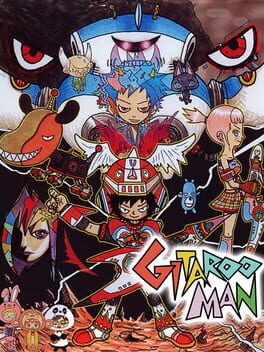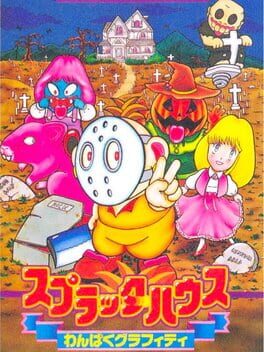HylianBran
BACKER
2251 Reviews liked by HylianBran
Streets of Rage 4
2020
When Streets of Rage 4 got revealed I was apprehensive. This is a series I love. I've gushed about it on Backloggd on other reviews of the Megadrive games (well two of them anyway...). My first thoughts on seeing 4's reveal trailer though was simply "that's not Streets of Rage". Where is the pixel art? Why is everything so bright and clean? What is with Blaze's walk animation? To be honest I wrote the game off without giving it a chance.
The reviews came in extremely positive to my surprise and piqued my interest. People I knew started playing it. Apparently it had tight controls, unlockable pixel art characters from the original game as bonus content. Was I wrong? Still I harboured doubts. What really turned my head though was hearing the soundtrack. It's a huge part of the franchise. The original and legendary composer Yuzo Kashiro was adding some music to the Soundtrack but hearing On fire by Oliver Deriviere on youtube absolutely drew my attention in a way more than any other news took. I had to buy it. When a friend of mine bought it we finally got into it playing co-op along with the Mr. x Nightmare DLC and have been playing every night now for several weeks. I happily admit I was wrong because Streets of Rage 4 is a Streets of Rage game, it is a fantastic beat 'em up and right now I am thoroughly addicted to it like I'm 12 years old all over again. You'd think someone of my age would know better by now not to judge something so effortlessly.
It's wonderful, it's everything Streets of Rage 4 should be. It brings new things to the table whilst still paying homage to the series roots. The game starts 10 years after Streets of Rage 3 with Mr. X's children having taken over what must be the world's most easily corruptible city. Original characters Blaze and Axel take to the streets along with newcomers Cherry and Floyd to take them back. As the game progresses you earn points which unlock more characters from the older games until there is quite an ensemble of choice of 18 with their own move sets though many of them are different versions of each other from older titles.
The game has the standard punch, kick, jump, and back attack as well as grapples allowing for throws, floor slams and extra damage. On top of this characters have forward dash blitz moves and specials. The specials use health but leave the chunk of your health bar you lost in green allowing you to get it back whilst doing regular blows. If you are hit however you lose it all on top of that blows damage. It's a great reward system and the special attacks can use invincibility frames to avoid damage or used in part of a combo with normal attacks and blitz moves to devastating combo effect in practice. Lastly in the character's arsenal are the star moves characters can use, these are limited and generally used to try and screen clear or at least give you some room.
Each character plays differently. The Streets of Rage 1 characters are more limited in their move sets but hit extremely hard and fast. The Streets of Rage 3 characters can all run and roll vertically making them quite manoeuvrable with the streets of Rage 2 and 4 cast as a mix somewhere in the middle. There is enough variety here you can find a character you are comfortable with to make it through to the credits and it's easy to change midway if you aren't grooving with who you have or you unlock someone new. For me though the joy has been playing through as every character aiming for S ranks and higher scores and combos for every level. Even characters I initially haven't enjoyed have turned out to be brilliant with some practice and understanding how their move sets all work.
The art style I initially hated at the game's reveal I came to love very quickly. I love the animations and character designs. It feels fresh and retro all at once with great usage of colour. If you don't like the look or feel of it thinking this isn't the game you wanted, please try it. In motion with the feeling of the controls and music it all clicks together. The aforementioned music really is perfect for the game, I mean check out the main theme. It could fit in with any of the game's in the series. Really perfect.
That's it in a quick review, Streets of Rage 4. I love how it plays, looks, sounds and feels. It's got great character and move variety, looks and sounds the part and is simply fun to play. My hat off to the dev team and I apologise for doubting you. Adding the Mr X's Nightmare DLC with extra characters and modes really seals the deal for those who want more. As my friend I play this co-op said to me the other day that all he could think about was "I really just wanted to play Streets of Rage 4".
Yeah, me too my friend, me too. What a first game to review for the start of the year.
+ Feels great to play with a large cast of characters and moves.
+ Hits the right notes for both new and old.
+ Great art and music.
+ Surprisingly addictive.
The reviews came in extremely positive to my surprise and piqued my interest. People I knew started playing it. Apparently it had tight controls, unlockable pixel art characters from the original game as bonus content. Was I wrong? Still I harboured doubts. What really turned my head though was hearing the soundtrack. It's a huge part of the franchise. The original and legendary composer Yuzo Kashiro was adding some music to the Soundtrack but hearing On fire by Oliver Deriviere on youtube absolutely drew my attention in a way more than any other news took. I had to buy it. When a friend of mine bought it we finally got into it playing co-op along with the Mr. x Nightmare DLC and have been playing every night now for several weeks. I happily admit I was wrong because Streets of Rage 4 is a Streets of Rage game, it is a fantastic beat 'em up and right now I am thoroughly addicted to it like I'm 12 years old all over again. You'd think someone of my age would know better by now not to judge something so effortlessly.
It's wonderful, it's everything Streets of Rage 4 should be. It brings new things to the table whilst still paying homage to the series roots. The game starts 10 years after Streets of Rage 3 with Mr. X's children having taken over what must be the world's most easily corruptible city. Original characters Blaze and Axel take to the streets along with newcomers Cherry and Floyd to take them back. As the game progresses you earn points which unlock more characters from the older games until there is quite an ensemble of choice of 18 with their own move sets though many of them are different versions of each other from older titles.
The game has the standard punch, kick, jump, and back attack as well as grapples allowing for throws, floor slams and extra damage. On top of this characters have forward dash blitz moves and specials. The specials use health but leave the chunk of your health bar you lost in green allowing you to get it back whilst doing regular blows. If you are hit however you lose it all on top of that blows damage. It's a great reward system and the special attacks can use invincibility frames to avoid damage or used in part of a combo with normal attacks and blitz moves to devastating combo effect in practice. Lastly in the character's arsenal are the star moves characters can use, these are limited and generally used to try and screen clear or at least give you some room.
Each character plays differently. The Streets of Rage 1 characters are more limited in their move sets but hit extremely hard and fast. The Streets of Rage 3 characters can all run and roll vertically making them quite manoeuvrable with the streets of Rage 2 and 4 cast as a mix somewhere in the middle. There is enough variety here you can find a character you are comfortable with to make it through to the credits and it's easy to change midway if you aren't grooving with who you have or you unlock someone new. For me though the joy has been playing through as every character aiming for S ranks and higher scores and combos for every level. Even characters I initially haven't enjoyed have turned out to be brilliant with some practice and understanding how their move sets all work.
The art style I initially hated at the game's reveal I came to love very quickly. I love the animations and character designs. It feels fresh and retro all at once with great usage of colour. If you don't like the look or feel of it thinking this isn't the game you wanted, please try it. In motion with the feeling of the controls and music it all clicks together. The aforementioned music really is perfect for the game, I mean check out the main theme. It could fit in with any of the game's in the series. Really perfect.
That's it in a quick review, Streets of Rage 4. I love how it plays, looks, sounds and feels. It's got great character and move variety, looks and sounds the part and is simply fun to play. My hat off to the dev team and I apologise for doubting you. Adding the Mr X's Nightmare DLC with extra characters and modes really seals the deal for those who want more. As my friend I play this co-op said to me the other day that all he could think about was "I really just wanted to play Streets of Rage 4".
Yeah, me too my friend, me too. What a first game to review for the start of the year.
+ Feels great to play with a large cast of characters and moves.
+ Hits the right notes for both new and old.
+ Great art and music.
+ Surprisingly addictive.
Magical Drop VI
2023
The actual puzzle-action gameplay is very well done, it's nice to see a long running franchise like this in hd with upscaled art. Everything else about it is terrible.
The story mode comes and goes like a dad buying cigarettes, unlocking characters is absolutely cryptic and tedious without a guide, and the board game mode... holy shit the board game mode. A buggy rng-laden mess that makes even the most masochistic of gamers beg to stop. The game will glitch and your turn will just be skipped randomly, there's little to no explanation on nay of the deeper mechanics, the enemy can just randomly decide to warp you back to the start whenever it feels like, etc. It's just unnecessarily cruel.
The game isn't even finished either, there's a dlc roadmap, but I can't imagine people would be waiting months on end with this game just for additional characters. If there were bug fixes, then I could see myself coming back to this. Also forgot to mention, online multiplayer is surprisingly functional, and fun... but local multiplayer is literally glitched out and IMPOSSIBLE to do (idk if this is only for the switch version, but still that is just an embarrassing error).
In conclusion, you may be better off with the earlier Magical Drop games. this game needs an update like the Dalai Lama needs therapy, and I want Empress to do things to me.
The story mode comes and goes like a dad buying cigarettes, unlocking characters is absolutely cryptic and tedious without a guide, and the board game mode... holy shit the board game mode. A buggy rng-laden mess that makes even the most masochistic of gamers beg to stop. The game will glitch and your turn will just be skipped randomly, there's little to no explanation on nay of the deeper mechanics, the enemy can just randomly decide to warp you back to the start whenever it feels like, etc. It's just unnecessarily cruel.
The game isn't even finished either, there's a dlc roadmap, but I can't imagine people would be waiting months on end with this game just for additional characters. If there were bug fixes, then I could see myself coming back to this. Also forgot to mention, online multiplayer is surprisingly functional, and fun... but local multiplayer is literally glitched out and IMPOSSIBLE to do (idk if this is only for the switch version, but still that is just an embarrassing error).
In conclusion, you may be better off with the earlier Magical Drop games. this game needs an update like the Dalai Lama needs therapy, and I want Empress to do things to me.
An absolutely beautiful game that masterfully taps into an atmosphere of dreamlike childhood nostalgia and one of the best console platformers of the turn of the 2000’s. Napple Tale feels ahead of its time with its hub based, sidequest focused design as you have Porch help everyone around Napple Town and pop back into each season themed platformer levels to look for items and new areas. The platforming is solid enough, though a bit jank at times, and the little animal buddy system is some nice flavor though really I only used the ones that increased your mobility to unlock stuff around the levels. The boss fights are fine too, nothing super memorable, aside from the one where you don’t technically fight an actual boss because that segment is one of the highlights of the game. Don’t know how faithful the fan translation was but what I do know is that it did a great job giving the characters a whole bunch of charm and having some fun goofy names for the characters. Also that Yoko Kanno soundtrack, holy shit. Wild Wind and Folly Fall are among the best video game songs period. It’s a travesty this never left Japan because I guarantee you it would be considered one of the cult classics of the Dreamcast alongside the like of Jet Set, Skies of Arcadia, and Shenmue if it had. A shining star of a classic 3D platformer that desperately deserves more love than it gets.
ESP Ra.De.
1998
It's interesting to look back at the year 1998 as a shooting game fan. It is a year where it feels like every company in the business was firing on all cylinders, yet simultaneously, the genre hung in the balance. In 1997 Cave released Dodonpachi, undoubtedly the most important shooting game made since their former selves in Toaplan put out flying shark in '87. And whilst it's basic formula defined both cave and the post-milennium shooter space, in 98 it was far from set in stone.
When you look at the other games from 98, it's easy to see a world where Radiant Silvergun, Armed Police Batrider, Dangun Feveron, Raiden Fighters Jet, Raycrisis or even Gunbird 2 and Blazing Star come out on top. A whole pile of ridiculously high-quality games that you can all make the case are the dev's finest, all at once. And whilst many of those games are still influencial, particularly RSG and Batrider - ESPrade is the one that truly came out on top.
Which is a bit odd on the face of it. Particulary in the western space a lack of localisation, ports and rights issues left it particularly obscure even among cave games, when it's stupidly important to shmup history and is one of Cave's absolute finest games.
The most important facet to ESPrade is it's presentation. Flying people over a cyberpunk tokyo fighting psychic battles with huge tanks, the psychic Yakuza and old women sitting on the cooles sprite of a statue head ever - it's all extremely cool. There's clearly a lot taken from Akira here (probably among others) but its far from a ripoff and is definetly itself. Artist and Mangaka had been working with Toaplan and it's offshoots Gazelle and Cave since 1991 but ESPrade was his first real shot to lead a whole project artistically and it's absolutely glorious. ESPrade is to this day Cave's best looking game and it's not particularly close. The stage backgrounds alone are some of the best sprtie art you'll ever see, but there's particularly fantastic use of renders here - particularly in the main characters which allows a ridiculous number of animation frames in their movement whilst somehow still blending in well. Cave rarely dropped rendered characters in the years following and they have never looked as good as they have here, it's incredible.
Junya Inoue is also, frankly, whilst an extremely talented worldbuilder and artist, is really best at either adding flavour to existing, drier worlds like he does with Dodonpachi in Daioujou, or leaving a decent amount to the imagination, and ESPrade is the true encapsulation of the latter. You get a tiny amount of short scenes to set up plot and conflict and if you want more all you'll get is a ridiculous barrage of art because Inoue has drawn each of these characters like 900 times, sometimes in his Manga BTOOM! without permission, but nary a lick of story to defile a perfect setup and payoff. As you do.
And there's just great majesty to it. Radiant Silvergun's remarkable storytelling beats it out for sure, and Taito were way ahead of the curve on this in general, but ESPrade's management of tension and minimal storytelling is just done so damn well. It's helped by effectively having 3 Stage 1s thanks to each character have their own and then playing the other twos, and they all benefit from the traditional lengths cave goes to making stage 1s incredible - but stage 5 is the real killer. A brutal part 1 the game testing all your abilities of routing and throwing piles of the enemies you've previously fought in greater density - only then to face an eerie, nigh-horrific stage 5b where you mow down hundreds of creepy psychic clones before facing down Ms. Garra.
Oh and Ms. Garra might be the best shooting game boss fight ever. A 7 phase behemoth, and even if you split them up they'd all make the top 20 cave bosses. Despite the ludicrous amount of amazing artistry the game has to offer, the image of Ms Garra casting huge wings across the snowy tokyo night, firing a beautiful mirage of bullets will always define ESPrade. It, and the earlier, also exceptional fight against Satouro Oumi are basically copied beat for beat by Windows-era Touhou. I do not blame ZUN one bit.
Aside from incredible bosses though, ESPrade just has a fantastic game loop. It does take a bit to get to grips with but tagging enemies with power shot then killing with normal to score is exceptionally fun and in a true CAVE moment, they didnt really give it another go. Stage design is also top tier.
Being such a fantastic refinement of Dodonpachi's ideas and a great encapsulation of it's own makes ESPrade the true shining star of 1998. Flying people, 10 phase bosses, emphasis on pacing and bombast, bullet patterns like blooming flowers fired by cute anime girls - whilst Story of Eastern Wonderland beats it by a few months, and DoDonPachi set the ground work, ESPrade is the true catalyst of the Shooting tropes that would define everything up to the modern era.
But more than that, it's just one of CAVE's finest. I'd say their second best game after Ketsui, and one of the top 10 shooting games outright. Only really Taito has beaten out it's presentation and matched with some of Cave's best ever work, its an utter classic.
When looked at among the class of 98, it's easy to contemplate and lust for the world of shooters we could have got if say, Dangun Feveron was the game to catch on - like if dragons dogma had been the game to define RPGs of the 2010s instead of demon souls, for instance - but like with Demon souls, when you look back on that spark - its hard to blame it for the road it lead us down.
When you look at the other games from 98, it's easy to see a world where Radiant Silvergun, Armed Police Batrider, Dangun Feveron, Raiden Fighters Jet, Raycrisis or even Gunbird 2 and Blazing Star come out on top. A whole pile of ridiculously high-quality games that you can all make the case are the dev's finest, all at once. And whilst many of those games are still influencial, particularly RSG and Batrider - ESPrade is the one that truly came out on top.
Which is a bit odd on the face of it. Particulary in the western space a lack of localisation, ports and rights issues left it particularly obscure even among cave games, when it's stupidly important to shmup history and is one of Cave's absolute finest games.
The most important facet to ESPrade is it's presentation. Flying people over a cyberpunk tokyo fighting psychic battles with huge tanks, the psychic Yakuza and old women sitting on the cooles sprite of a statue head ever - it's all extremely cool. There's clearly a lot taken from Akira here (probably among others) but its far from a ripoff and is definetly itself. Artist and Mangaka had been working with Toaplan and it's offshoots Gazelle and Cave since 1991 but ESPrade was his first real shot to lead a whole project artistically and it's absolutely glorious. ESPrade is to this day Cave's best looking game and it's not particularly close. The stage backgrounds alone are some of the best sprtie art you'll ever see, but there's particularly fantastic use of renders here - particularly in the main characters which allows a ridiculous number of animation frames in their movement whilst somehow still blending in well. Cave rarely dropped rendered characters in the years following and they have never looked as good as they have here, it's incredible.
Junya Inoue is also, frankly, whilst an extremely talented worldbuilder and artist, is really best at either adding flavour to existing, drier worlds like he does with Dodonpachi in Daioujou, or leaving a decent amount to the imagination, and ESPrade is the true encapsulation of the latter. You get a tiny amount of short scenes to set up plot and conflict and if you want more all you'll get is a ridiculous barrage of art because Inoue has drawn each of these characters like 900 times, sometimes in his Manga BTOOM! without permission, but nary a lick of story to defile a perfect setup and payoff. As you do.
And there's just great majesty to it. Radiant Silvergun's remarkable storytelling beats it out for sure, and Taito were way ahead of the curve on this in general, but ESPrade's management of tension and minimal storytelling is just done so damn well. It's helped by effectively having 3 Stage 1s thanks to each character have their own and then playing the other twos, and they all benefit from the traditional lengths cave goes to making stage 1s incredible - but stage 5 is the real killer. A brutal part 1 the game testing all your abilities of routing and throwing piles of the enemies you've previously fought in greater density - only then to face an eerie, nigh-horrific stage 5b where you mow down hundreds of creepy psychic clones before facing down Ms. Garra.
Oh and Ms. Garra might be the best shooting game boss fight ever. A 7 phase behemoth, and even if you split them up they'd all make the top 20 cave bosses. Despite the ludicrous amount of amazing artistry the game has to offer, the image of Ms Garra casting huge wings across the snowy tokyo night, firing a beautiful mirage of bullets will always define ESPrade. It, and the earlier, also exceptional fight against Satouro Oumi are basically copied beat for beat by Windows-era Touhou. I do not blame ZUN one bit.
Aside from incredible bosses though, ESPrade just has a fantastic game loop. It does take a bit to get to grips with but tagging enemies with power shot then killing with normal to score is exceptionally fun and in a true CAVE moment, they didnt really give it another go. Stage design is also top tier.
Being such a fantastic refinement of Dodonpachi's ideas and a great encapsulation of it's own makes ESPrade the true shining star of 1998. Flying people, 10 phase bosses, emphasis on pacing and bombast, bullet patterns like blooming flowers fired by cute anime girls - whilst Story of Eastern Wonderland beats it by a few months, and DoDonPachi set the ground work, ESPrade is the true catalyst of the Shooting tropes that would define everything up to the modern era.
But more than that, it's just one of CAVE's finest. I'd say their second best game after Ketsui, and one of the top 10 shooting games outright. Only really Taito has beaten out it's presentation and matched with some of Cave's best ever work, its an utter classic.
When looked at among the class of 98, it's easy to contemplate and lust for the world of shooters we could have got if say, Dangun Feveron was the game to catch on - like if dragons dogma had been the game to define RPGs of the 2010s instead of demon souls, for instance - but like with Demon souls, when you look back on that spark - its hard to blame it for the road it lead us down.
My favorite tin foil hat theory in videogames is one that I remember reading around 2014-2015 that said one of the reasons Lost Levels was made this way, was because Nintendo received a lot of letters praising the game, and in particular, the level 7-4.
Those letters being supposedly sent by the people who worked on the Commodore, hoping that when the inevitable Mario sequel was out, it would suck and kids would want to stop playing on the NES and give the Commodore 64 a shot.
Those letters being supposedly sent by the people who worked on the Commodore, hoping that when the inevitable Mario sequel was out, it would suck and kids would want to stop playing on the NES and give the Commodore 64 a shot.
Sonic the Hedgehog 2
2022
Sonic 2's back half is absolutely unforgivable, I hate those fuckin' fiddler crabs in Metropolis Zone with their Volkswagen Beetle-sized hitboxes and that dumbass final boss gauntlet that sucks the wind out of you- wait what the fuck is this shit, get this crap out of here.
elbow drops it through the announce table
elbow drops it through the announce table
Jusant
2023
Overall, a pleasant experience despite some pacing issues and underutilized mechanics. Jusant basically fits every trope of the Journey-like (a solo pilgrimage from point A to B to C, heavy focus on atmospheric exploration with some environmental puzzles, rediscovering an abandoned/forgotten civilization, etc), but what separates it from most typical copycats is that the main moment-to-moment gameplay is actually pretty engaging this time around! The obvious example here is how the game forces you to tightly grip your controller’s triggers to climb and hang onto ledges for dear life, but most actions in-between such as placing pinons/swinging back and forth with your grapple/jumping across and between ledges keep the interaction flowing smoothly. Interestingly, I would say Jusant’s problem is also opposite to that of most Journey-likes, because it handles its micro well enough, but falters a bit in its execution of the macro. If I were to compare the climbing to say, that of Shadow of the Colossus, then the difference in sense of scale becomes more readily apparent. Shadow of the Colossus takes places in mostly connected and open environments (with a few in vast caverns), but a good chunk of Jusant’s climbing takes place indoors in often cramped spaces that left me wishing there was an FOV slider to compensate for the often uncomfortably close camera getting stuck on walls. I do think it’s a bit of a missed opportunity that Jusant didn’t get any opportunities to showcase its world in its entirety and instead cut off each area into its own isolated level. A part of me was hoping that it would execute this as a sort of mirror to Journey; whereas Journey tries to keep the final shining summit in view at all times outside to remind the player of their final destination, I think Jusant could have combined all the outside areas and given the player the opportunity to look back from increasing heights to remind themselves of just how far they’ve come.
Getting back to macro vs micro, I have a few quibbles and suggestions in regards to improving the overall pacing, as there were some elements that felt like occasional stumbling blocks. The environments are sometimes difficult to read (especially in indoor settings) because climbable rocks/edges often look similarly shaded to their non-interactable surroundings, which resulted in me getting lost a few times. The in-game guide (“Listen” via pressing right on the d-pad) could be improved in this aspect, since it gives you a general direction to move towards but doesn’t solve the issue of figuring out what background object is required to ascend. Speaking of background objects, the environments are often littered with so many differently-colored materials, which contributes to the above problem of figuring out the way forward and also makes the task of searching for collectibles more annoying unless you’re just focusing on the context-sensitive prompts. I sadly also have to agree with others here that the lore dumps via the letters/diary entries didn’t do much for me (resulting in a narrative that I mostly ignored), and I would have preferred emptying the surroundings somewhat to better establish a feeling of presence with a heavier emphasis on environmental storytelling. In addition, removing these excess objects would reduce the amount of 3D polygonal jank present in the game: I often found myself suddenly stagnating and getting stuck on the floor from bumpy geometry, and the same rung true while climbing because I once had to restart from the last checkpoint after getting trapped by some nearby vines.
I’m going to nitpick the climbing as well and concur regarding the lack of tension, as the game never forced me to fully leverage my capabilities: again, this is a key detail that separates this game’s climbing from the heights reached by Shadow of the Colossus. The game could have leaned more into tight timing segments that forced the player to quickly scale ledges before they crumbled; this is briefly explored in Chapter 3 with the sunlight burning off plant roots, but then gets replaced with more calculated climbing for the rest of the game. Similarly, the pinons feel underutilized: I can’t recall any instance where I felt obligated to place down more than one pinon at a time while climbing, and that was often due to needing the ability to swing back and forth rather than using it as a safety net. A possible solution here is reworking the resting mechanic so that it could only be used at a pinon: this would also solve the pacing issue of having to constantly pause to regain stamina, and force the player to more carefully place pinons to make the most out of the stamina gauge's capacity. Finally, I was surprised that I couldn’t alter the amount of slack/tension in the rope while climbing and hanging onto ledges. This ability would allow the player additional control over jumps and climbing capacity without needing to expend a pinon (since I rarely ever reached the full rope length as is), which in turn would give the player more freedom to create shortcuts by letting them go for riskier maneuvers that the restrictive mechanics would prohibit otherwise.
There’s a lot of room for improvement, but I nevertheless appreciate that Jusant doesn’t overstay its welcome. Despite being a bit rough around the edges, the core gameplay is a nice change of pace from its peers, and it further distinguishes itself from its competition with its restrained ending. Instead of going for a bombastic “victory-lap” finale, Jusant has the modesty to bring itself back to earth with a no frills back-to-basics climbing segment devoid of the previous level gimmicks and clutter. That's the game in a nutshell: it might not push the envelope of the medium, but it accomplishes its premise in the time given with solid peaks despite some shaky consistency. In a genre full of misguided and uncompelling carbon copies, I’ll gladly take it.
Getting back to macro vs micro, I have a few quibbles and suggestions in regards to improving the overall pacing, as there were some elements that felt like occasional stumbling blocks. The environments are sometimes difficult to read (especially in indoor settings) because climbable rocks/edges often look similarly shaded to their non-interactable surroundings, which resulted in me getting lost a few times. The in-game guide (“Listen” via pressing right on the d-pad) could be improved in this aspect, since it gives you a general direction to move towards but doesn’t solve the issue of figuring out what background object is required to ascend. Speaking of background objects, the environments are often littered with so many differently-colored materials, which contributes to the above problem of figuring out the way forward and also makes the task of searching for collectibles more annoying unless you’re just focusing on the context-sensitive prompts. I sadly also have to agree with others here that the lore dumps via the letters/diary entries didn’t do much for me (resulting in a narrative that I mostly ignored), and I would have preferred emptying the surroundings somewhat to better establish a feeling of presence with a heavier emphasis on environmental storytelling. In addition, removing these excess objects would reduce the amount of 3D polygonal jank present in the game: I often found myself suddenly stagnating and getting stuck on the floor from bumpy geometry, and the same rung true while climbing because I once had to restart from the last checkpoint after getting trapped by some nearby vines.
I’m going to nitpick the climbing as well and concur regarding the lack of tension, as the game never forced me to fully leverage my capabilities: again, this is a key detail that separates this game’s climbing from the heights reached by Shadow of the Colossus. The game could have leaned more into tight timing segments that forced the player to quickly scale ledges before they crumbled; this is briefly explored in Chapter 3 with the sunlight burning off plant roots, but then gets replaced with more calculated climbing for the rest of the game. Similarly, the pinons feel underutilized: I can’t recall any instance where I felt obligated to place down more than one pinon at a time while climbing, and that was often due to needing the ability to swing back and forth rather than using it as a safety net. A possible solution here is reworking the resting mechanic so that it could only be used at a pinon: this would also solve the pacing issue of having to constantly pause to regain stamina, and force the player to more carefully place pinons to make the most out of the stamina gauge's capacity. Finally, I was surprised that I couldn’t alter the amount of slack/tension in the rope while climbing and hanging onto ledges. This ability would allow the player additional control over jumps and climbing capacity without needing to expend a pinon (since I rarely ever reached the full rope length as is), which in turn would give the player more freedom to create shortcuts by letting them go for riskier maneuvers that the restrictive mechanics would prohibit otherwise.
There’s a lot of room for improvement, but I nevertheless appreciate that Jusant doesn’t overstay its welcome. Despite being a bit rough around the edges, the core gameplay is a nice change of pace from its peers, and it further distinguishes itself from its competition with its restrained ending. Instead of going for a bombastic “victory-lap” finale, Jusant has the modesty to bring itself back to earth with a no frills back-to-basics climbing segment devoid of the previous level gimmicks and clutter. That's the game in a nutshell: it might not push the envelope of the medium, but it accomplishes its premise in the time given with solid peaks despite some shaky consistency. In a genre full of misguided and uncompelling carbon copies, I’ll gladly take it.
Super Adventure Hand
2023
Here's the thing: Super Adventure Hand is not a very good game. It is, however, a fun game. The interesting bit is the very specific way it is both not a very good, yet fun, experience.
See, dev teams used to be smaller. Sometimes one guy, sometimes three. So much more fell on the lap of individual programmer talent. And sometimes that individual programmer would figure out a neat trick. A way to do rotating 2D towers, sprite scaling, a bouncy physics system. And because the market was tough, and because standing out was difficult, the team would go on to build an entire game heavily based around that one programming trick. The gimmick came before the game, and it was often obvious that it had.
That's what Super Adventure Hand feels like. Somebody figured out how to do procedural animation for the fingers of a hand crawling Thing-style across the ground and then went "Sure, why not" and made a game around it while diving headfirst into the classic PC tradition of dev art (or, in this case, stock assets) and level design that is clearly amateur and utterly riddled with every foible made by any game in the Chip's Challenge house. Repetitive tasks in individual levels? Unfocused design between levels and a notably uneven difficulty curve? Levels that are mostly "what if we just did a whole lot of X"? All here.
So, is it a good game? No. Is it a game that hearkens back to a very specific era of PC gaming, when weird ideas still had the occasional chance and programmers held the reins? Absolutely. So, nostalgia for me, but not likely for many others.
See, dev teams used to be smaller. Sometimes one guy, sometimes three. So much more fell on the lap of individual programmer talent. And sometimes that individual programmer would figure out a neat trick. A way to do rotating 2D towers, sprite scaling, a bouncy physics system. And because the market was tough, and because standing out was difficult, the team would go on to build an entire game heavily based around that one programming trick. The gimmick came before the game, and it was often obvious that it had.
That's what Super Adventure Hand feels like. Somebody figured out how to do procedural animation for the fingers of a hand crawling Thing-style across the ground and then went "Sure, why not" and made a game around it while diving headfirst into the classic PC tradition of dev art (or, in this case, stock assets) and level design that is clearly amateur and utterly riddled with every foible made by any game in the Chip's Challenge house. Repetitive tasks in individual levels? Unfocused design between levels and a notably uneven difficulty curve? Levels that are mostly "what if we just did a whole lot of X"? All here.
So, is it a good game? No. Is it a game that hearkens back to a very specific era of PC gaming, when weird ideas still had the occasional chance and programmers held the reins? Absolutely. So, nostalgia for me, but not likely for many others.
Bullet Witch
2006
Made a new video to go along with this so hope ya'll enjoy it if ya check it out!
When I think of the beginning of the HD Era of gaming I can really only think of one game, Bullet Witch.
Bullet Witch is in many a way a drive of the creative spirit of a company like Cavia and while absolutely flawed I can't help but absolutely love it. A lot of this is nostalgic tie I won't lie but I just love its playful, explorative love with what it's doing and trying to do. It hits me like an absolute fun wave when I bounce around like a cool hot witch lady blasting mothafuckas down with the fully upgraded machine gun broom. Something about this sits within my mind as cozy, I love going back to it every now and again and giving it a cozy playthrough. It's like a nice goth ass cup of hot chocolate on a cold ass night ya know?
It's not some amazing masterpiece but I don't care I will always love this game. This game is like watching a 2000's Syfy/Fox series that maybe lasted like a season or two before disappearing into the ether forever. It's got a certain vibe and spirit! Like a playable 90's apocalyptic OVA (though not as hyperviolent) that flies by on vibes, huge chaotic spells and the rule of cool in ways. Alicia is a rad protag even if I wish the story here gave her a bit more in general, honestly I wish it gave Maxwell Cougar a bit more too but it also kinda perfectly fits the lean fuckin around with the 360 feel this game is going for.
This game definitely isn't for everybody, I guarantee people probably hate the shit out of this game or think little of the things I think make it really unique, soulful and fun! But for me it's just so wonderful. It's just so intoxicating to me and my memories paint more of the picture of this for me.
Bullet Witch is comfort food that I'll never hesitate to go back to every now and again.
When I think of the beginning of the HD Era of gaming I can really only think of one game, Bullet Witch.
Bullet Witch is in many a way a drive of the creative spirit of a company like Cavia and while absolutely flawed I can't help but absolutely love it. A lot of this is nostalgic tie I won't lie but I just love its playful, explorative love with what it's doing and trying to do. It hits me like an absolute fun wave when I bounce around like a cool hot witch lady blasting mothafuckas down with the fully upgraded machine gun broom. Something about this sits within my mind as cozy, I love going back to it every now and again and giving it a cozy playthrough. It's like a nice goth ass cup of hot chocolate on a cold ass night ya know?
It's not some amazing masterpiece but I don't care I will always love this game. This game is like watching a 2000's Syfy/Fox series that maybe lasted like a season or two before disappearing into the ether forever. It's got a certain vibe and spirit! Like a playable 90's apocalyptic OVA (though not as hyperviolent) that flies by on vibes, huge chaotic spells and the rule of cool in ways. Alicia is a rad protag even if I wish the story here gave her a bit more in general, honestly I wish it gave Maxwell Cougar a bit more too but it also kinda perfectly fits the lean fuckin around with the 360 feel this game is going for.
This game definitely isn't for everybody, I guarantee people probably hate the shit out of this game or think little of the things I think make it really unique, soulful and fun! But for me it's just so wonderful. It's just so intoxicating to me and my memories paint more of the picture of this for me.
Bullet Witch is comfort food that I'll never hesitate to go back to every now and again.
Decimate Drive
2023
If you don't want any spoilers, give Decimate Drive ten minutes of your time and then come back.
It is well worth it if you are poor and seek an asynchronous micro- thrill and joy which is best experienced blind.
The slow set-up also proved utterly genius in such a short game, to let that single trick it pulls on the player carry more weight, while setting the intended mood for that otherwise admittedly goofy Idea.
I witnessed a constant emotinal flux inside of me, rushing from short burst of terror to dopamine high giggling, all predicated on the tension of a restless motor engine wanting to hurt me.
While I was running for my Player Character's life I felt some genuine frights, not horror mind you, rather a contemporary but primal fear to not get crushed by tonnes of fast-moving steel.
This was only made possible by its short length, the almost innate uncertainty we have all experienced while trying to cross a street and can't make out if a car, heading directly at one will hit the breaks in time and the game's promise to twist this uncertainty into vehicular manslaughter.
I believe if it was any longer with more scenarios then the routinised gaminess revealing itself would turn that fear of getting bulldozered by a faceless machine too much into a fear of not touching a hitbox, which sets you back to the start of the level.
That game you play with the cars you flee from is just an asymmetrical live or death version of "catch".
It could be boiled down to a couple things.
First of, just listening for the automobile or a driving bassline shouting from its stereo.
Breaking the open parallel from the player to it with a street pole to stop that vehicle aiming straight at you dead in its tracks.
At least for as long as the A.I. takes to reverse back out of it again.
Or a Corrida de Toros like dance in which the player utilises timed strafing, sudden directional changes and maybe even outplays the car by looking directly at it, while calculating its trajectory or they deliberatly bait it into a corner to win more time.
Moving around the Player Character will run, or rather jog, automatically.
One silly jank I found as I was playing is that the walk/run toggle button won't function a second time after you switched to walking.
The very indie game dev solution for this problem was to hit the jump button.
There was no other real use for the existence of this jump button, so after finding this kinda funny bug I choose to deduct that the dev only left the jump button in this game, aside from that little extra feel of "better movement options", or immersion or some shit, to reset the Player Character to their default running speed.
Why there was even the option to walk could be questioned, but I would claim it also aids the deception the game pulls on the player with its slow and deliberate, atmospheric start.
I also liked that the first few minutes subconsciously train the player to understand that their only goal is the red glowing door,
like if that wasn't obvious to them already, but still there is zero tutorialisation, only mood setting and tension building and I enjoyed that holistic approach.
Yea, this little itch project was pretty fascinating, if I hadn't played Homebody a couple days ago and would still care to think about that kind of stuff I might've called this my favourite horror game of the year.
(This might just be a sly attempt to shout-out Homebody lol, a game, horror and puzzle fans should def check out, although I probably wont write about it, cause @BeauTartep already did the definitive dissertation, but spoiler warning)
I mean, I have been writing this now for longer than it took me to play the game. That is the equivalent of an automatic recommendation in my book.
One minor nitpick I have is that I think the death screen and sounds leading into it could have hit harder, in a literal sense.
Shit could have been an ounce more visceral.
Itch.io Horror games are weird and I am kind of obssesed with them lately. There is so much good stuff to find behind all the jank and between the overstaturation of backroom games. lol
What I learned from this game is that it can be possible to find thrills and tension inside a concept that might just seem completly silly on paper, at least if you pace it with intention and restraint and know how to set the proper atmosphere for it.
And that vehicular manslaughter is kinda not based. Miss me w that shit pls.
It is well worth it if you are poor and seek an asynchronous micro- thrill and joy which is best experienced blind.
The slow set-up also proved utterly genius in such a short game, to let that single trick it pulls on the player carry more weight, while setting the intended mood for that otherwise admittedly goofy Idea.
I witnessed a constant emotinal flux inside of me, rushing from short burst of terror to dopamine high giggling, all predicated on the tension of a restless motor engine wanting to hurt me.
While I was running for my Player Character's life I felt some genuine frights, not horror mind you, rather a contemporary but primal fear to not get crushed by tonnes of fast-moving steel.
This was only made possible by its short length, the almost innate uncertainty we have all experienced while trying to cross a street and can't make out if a car, heading directly at one will hit the breaks in time and the game's promise to twist this uncertainty into vehicular manslaughter.
I believe if it was any longer with more scenarios then the routinised gaminess revealing itself would turn that fear of getting bulldozered by a faceless machine too much into a fear of not touching a hitbox, which sets you back to the start of the level.
That game you play with the cars you flee from is just an asymmetrical live or death version of "catch".
It could be boiled down to a couple things.
First of, just listening for the automobile or a driving bassline shouting from its stereo.
Breaking the open parallel from the player to it with a street pole to stop that vehicle aiming straight at you dead in its tracks.
At least for as long as the A.I. takes to reverse back out of it again.
Or a Corrida de Toros like dance in which the player utilises timed strafing, sudden directional changes and maybe even outplays the car by looking directly at it, while calculating its trajectory or they deliberatly bait it into a corner to win more time.
Moving around the Player Character will run, or rather jog, automatically.
One silly jank I found as I was playing is that the walk/run toggle button won't function a second time after you switched to walking.
The very indie game dev solution for this problem was to hit the jump button.
There was no other real use for the existence of this jump button, so after finding this kinda funny bug I choose to deduct that the dev only left the jump button in this game, aside from that little extra feel of "better movement options", or immersion or some shit, to reset the Player Character to their default running speed.
Why there was even the option to walk could be questioned, but I would claim it also aids the deception the game pulls on the player with its slow and deliberate, atmospheric start.
I also liked that the first few minutes subconsciously train the player to understand that their only goal is the red glowing door,
like if that wasn't obvious to them already, but still there is zero tutorialisation, only mood setting and tension building and I enjoyed that holistic approach.
Yea, this little itch project was pretty fascinating, if I hadn't played Homebody a couple days ago and would still care to think about that kind of stuff I might've called this my favourite horror game of the year.
(This might just be a sly attempt to shout-out Homebody lol, a game, horror and puzzle fans should def check out, although I probably wont write about it, cause @BeauTartep already did the definitive dissertation, but spoiler warning)
I mean, I have been writing this now for longer than it took me to play the game. That is the equivalent of an automatic recommendation in my book.
One minor nitpick I have is that I think the death screen and sounds leading into it could have hit harder, in a literal sense.
Shit could have been an ounce more visceral.
Itch.io Horror games are weird and I am kind of obssesed with them lately. There is so much good stuff to find behind all the jank and between the overstaturation of backroom games. lol
What I learned from this game is that it can be possible to find thrills and tension inside a concept that might just seem completly silly on paper, at least if you pace it with intention and restraint and know how to set the proper atmosphere for it.
And that vehicular manslaughter is kinda not based. Miss me w that shit pls.
the cowards finally gave Lara some muscle definition. Also her characterization in the trilogy has been very funny in how the writers seem almost uninterested in giving her any heroic motivation beyond "bad guy wants thing I want." This was her motivation in the originals, but Lara made no bones about her own ego and greed driving her goals, she was very cutthroat and out for herself. This Lara fakes some kind of altruism for gunning down hundreds of dudes.
The disconnect is at its highest here. A villain tells Lara, "do not take this dagger." she takes it, causes a cataclysmic flood, and the villain is like "ah, dumbass!!" Lara is what a D&D nerd might call stupid good, when in the previous ones she was more lawful evil.
Gameplay is still really good though, god I love playing these games.
The disconnect is at its highest here. A villain tells Lara, "do not take this dagger." she takes it, causes a cataclysmic flood, and the villain is like "ah, dumbass!!" Lara is what a D&D nerd might call stupid good, when in the previous ones she was more lawful evil.
Gameplay is still really good though, god I love playing these games.
Gitaroo Man
2001
Ever have a fucked up night where you wake up from your eternal slumber in the graveyard to your now happy no-longer grieving pink-haired girlfriend, only for the pumpkin asshole buried next to you to also wake up and kidnap her right in front of you? (Who the hell buries a pumpkin? Who held a funeral for it?)
Welcome to Devil Town motherfucker.
Good simplistic tasty Famicom action at the core of it's apple. You move, you jump, you hit things with your adorable little axe and you sometimes have a shotgun. The standard action-platformer affair of it's time, but surprisingly competent in it's philosophy despite the appearance of being a parody. Movement is tight, hitboxes are right, and the most dastardly thing pulled on you is falling into pits and being sent back a bit, which is like a 2 on the scale of NES bullshit with 10 probably being that room in Dirty Harry that softlocks you until you reset. The only thing I could nitpick was the fly boss whose hitbox seemed to be the wings and not his face, sorry I like hitting things in the face.
Functionally sound, and that's probably at least half the reason it has a decent speed run scene along with some of the other comedic elements that never really get old like the girl who walks off having 50 chestbursters fly out of her, or being assaulted by haunted shit coming out of a cursed toilet complete with possessed plunger. Probably an NES/FC game I should be hocking to people more often since it's very beatable, and not as capable of filtering people like a Ninja Gaiden-branded faucet attachment.
It's here that I remember, was it a movie I watched or was I daydreaming just now?
looks at the camera and points to the audience
Remember kids, winners don't use drugs.
Welcome to Devil Town motherfucker.
Good simplistic tasty Famicom action at the core of it's apple. You move, you jump, you hit things with your adorable little axe and you sometimes have a shotgun. The standard action-platformer affair of it's time, but surprisingly competent in it's philosophy despite the appearance of being a parody. Movement is tight, hitboxes are right, and the most dastardly thing pulled on you is falling into pits and being sent back a bit, which is like a 2 on the scale of NES bullshit with 10 probably being that room in Dirty Harry that softlocks you until you reset. The only thing I could nitpick was the fly boss whose hitbox seemed to be the wings and not his face, sorry I like hitting things in the face.
Functionally sound, and that's probably at least half the reason it has a decent speed run scene along with some of the other comedic elements that never really get old like the girl who walks off having 50 chestbursters fly out of her, or being assaulted by haunted shit coming out of a cursed toilet complete with possessed plunger. Probably an NES/FC game I should be hocking to people more often since it's very beatable, and not as capable of filtering people like a Ninja Gaiden-branded faucet attachment.
It's here that I remember, was it a movie I watched or was I daydreaming just now?
looks at the camera and points to the audience
Remember kids, winners don't use drugs.
